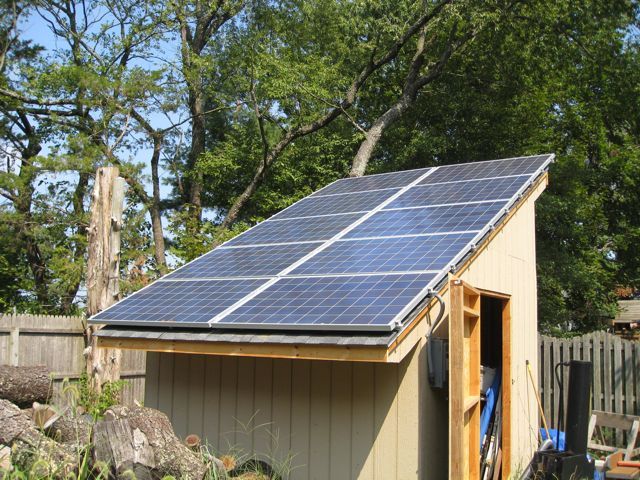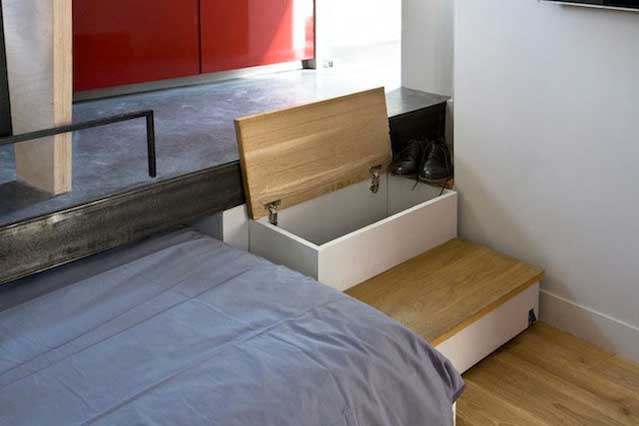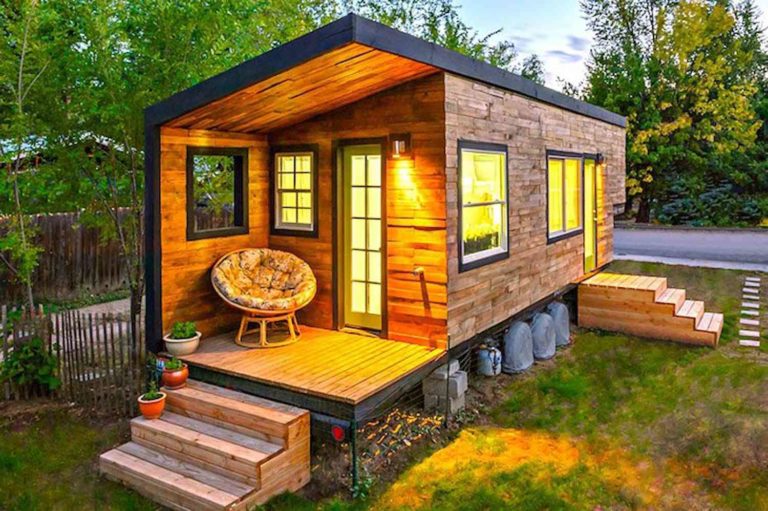Building and living in an off-grid tiny house is a dream come true for many eco-conscious homeowners.
But, running your home on solar power can seem like a daunting task, especially if you’re new to the world of renewable energy.
Fortunately, with these easy steps and practical tips, you can DIY your own solar power system and live sustainably without breaking the bank.
We will take you through the process of selecting the right equipment, installing it safely and efficiently, and maintaining a reliable source of energy for your tiny house.
Determine your energy needs
Calculate your energy needs based on the size of your tiny house, your appliances, and your lifestyle. This will help you determine the size of your solar power system.
The size of your tiny house, the appliances you plan to use, and your lifestyle all play a role in determining how much energy you need to power your home.
For example, if you plan to use energy-intensive appliances like a refrigerator, stove, and air conditioning unit, you’ll need a larger solar power system to meet your energy needs.
On the other hand, if you plan to live simply and use energy-efficient appliances, you may be able to get by with a smaller system.
If you live in a location with abundant sunlight, you may be able to power your tiny house with a smaller system.
By calculating your energy needs based on these factors, you can determine the appropriate size of your solar power system and ensure that it meets your energy needs.
Choose the right solar panels
Select high-quality solar panels that are suitable for your location and climate. Look for panels with a high efficiency rating and a long warranty.
When selecting solar panels for your home or business, it’s important to choose high-quality panels that are suitable for your location and climate.
Look for panels with a high efficiency rating, which measures how much of the sun’s energy the panels can convert into electricity.
A higher efficiency rating means more savings on your energy bills over time.
Look for panels with a long warranty, which can provide peace of mind and protect your investment.
Many manufacturers offer 25-year warranties on their solar panels, so be sure to choose a panel that offers this level of coverage.
Moreover, consider the durability and lifespan of the solar panels.
Choose panels that can withstand extreme weather conditions, such as hail and high winds, and those that have a long lifespan.
A longer lifespan means that you’ll enjoy free electricity for a longer period of time.
Another important factor to consider is the type of solar panel technology.
Monocrystalline and polycrystalline panels are the most common types, and they vary in efficiency and cost.
Monocrystalline panels are more efficient but also more expensive, while polycrystalline panels are less efficient but more affordable.
Thin-film panels are another option, but they are less efficient and more expensive than the other two types.
Consider the solar panel installation company’s reputation, experience, and certification.
Choose a company that has a proven track record of success, experience in installing solar panels in your area, and certifications from reputable organizations such as the North American Board of Certified Energy Practitioners (NABCEP).
This will ensure that your solar panels are installed correctly and meet all safety and quality standards.
Selecting the right solar panels for your home or business requires careful consideration of several factors, including efficiency, lifespan, and technology.
By doing your research and choosing high-quality solar panels, you can enjoy free electricity for a long time and maximize your investment in renewable energy.] When selecting the right solar panels for your home or business, there are several key factors to consider to ensure that you get the most out of your investment in renewable energy.
First and foremost, choose high-quality solar panels that are suitable for your location and climate.
Look for panels with a high efficiency rating, as these will generate more electricity from the same amount of sunlight.
Opt for panels with a long warranty, as this will provide you with peace of mind and protect your investment.
A longer lifespan for the panels will also ensure that you enjoy free electricity for a longer period of time.
Another important consideration is the technology used in the solar panels.
Newer technologies such as monocrystalline and polycrystalline silicon offer higher efficiencies and longer lifetimes compared to older technologies like thin-film solar panels.
It is essential that your solar panels are installed correctly and meet all safety and quality standards.
Look for installers who are certified and experienced, and ensure that they provide you with a detailed installation plan and a comprehensive warranty.
By doing your research and choosing high-quality solar panels, you can maximize your investment in renewable energy and enjoy free electricity for a long time.
Plan your solar panel layout
Determine the best location for your solar panels based on sun exposure and shading. You may need to adjust the angle and tilt of your panels to maximize energy production.
When planning your solar panel layout, it’s important to consider the best location for your panels to maximize energy production.
Look for areas that receive direct sunlight for the majority of the day, without any significant shading from trees, buildings, or other obstructions.
South-facing installations are typically the most effective, as they receive the most sunlight throughout the day.
However, if your roof or property has obstructions or limited space, an east- or west-facing installation may also be viable.
To maximize energy production, you’ll need to adjust the angle and tilt of your solar panels based on your location’s latitude and the time of year.
In regions with a steep angle towards the sun, a more tilted installation may be necessary to ensure optimal energy output.
In cooler climates, a less tilted installation can help prevent snow accumulation and improve efficiency.
Consider the orientation of your solar panels to minimize shading from any existing structures or trees, as this can significantly reduce energy production.
By carefully planning your solar panel layout and angle, you can ensure optimal energy output and minimize any potential issues.
Install a charge controller
A charge controller ensures that your solar panels charge your battery bank safely and efficiently. Choose a charge controller that is compatible with your solar panels and battery bank.
Installing a charge controller is a critical step in setting up a solar-powered electrical system.
A charge controller ensures that your solar panels charge your battery bank safely and efficiently, preventing overcharging, undercharging, and ensuring that the battery bank is fully charged.
When choosing a charge controller, it is essential to select one that is compatible with your solar panels and battery bank.
There are several types of charge controllers available, including pulse width modulation (PWM) controllers and maximum power point tracking (MPPT) controllers.
PWM controllers are simpler and less expensive, but MPPT controllers are more advanced and efficient, as they can extract more power from the solar panels.
When selecting a charge controller, consider the voltage and current rating of your solar panels and battery bank, as well as the type of charging method you prefer.
For example, if you have a 12V battery bank, you will need a charge controller that can handle a minimum of 12V and a maximum of 24V.
You may prefer a charge controller with a specific feature, such as a low-voltage disconnect (LVD) feature, which protects your batteries from being over-discharged.
It is also essential to properly install and configure your charge controller to ensure that it functions correctly.
This may involve setting the charging voltage and current, as well as configuring the charging cycle.
Improper installation or configuration can lead to reduced performance, reduced lifespan of your battery bank, and potentially dangerous situations.
Therefore, it is important to follow the manufacturer’s instructions and seek professional assistance if necessary.
By investing in a high-quality charge controller, you can ensure that your solar-powered electrical system operates safely and efficiently, providing you with a reliable source of power for years to come.
Install a battery bank
Choose a deep cycle battery that is suitable for your tiny house and solar power system. Make sure that your battery bank is properly sized and configured for your energy needs.
Installing a battery bank in your tiny house is a important step towards achieving energy independence and ensuring a reliable power supply.
When selecting a deep cycle battery, consider the size and requirements of your tiny house and solar power system.
A properly sized battery bank will provide enough power to meet your energy needs, while a misconfigured system can lead to underperformance or even damage to your batteries.
First, determine the total energy consumption of your tiny house, including appliances, lighting, and heating/cooling systems.
This will help you choose the appropriate battery size and capacity.
Next, consider the solar power system you will be using to charge the batteries.
A more powerful solar array will require a larger battery bank to store excess energy for use during periods of low solar input.
Once you have selected the appropriate battery size and capacity, it’s essential to properly configure the battery bank for your energy needs.
This involves determining the proper charging and discharging settings for your batteries, as well as setting up a battery monitoring system to ensure the health of your batteries.
Improper configuration can lead to premature battery failure, so it’s important to seek the guidance of a qualified professional when installing your battery bank.
By taking the time to properly size and configure your battery bank, you can ensure a reliable power supply for your tiny house, minimize energy costs, and reduce your reliance on the grid.
With the right deep cycle battery and careful system configuration, you’ll be well on your way to achieving energy independence and living sustainably in your tiny house.
Install an inverter/charger
An inverter/charger converts the DC power from your batteries to AC power for your appliances. Look for an inverter/charger that is compatible with your solar panels and battery bank.
Installing an inverter/charger is a important step in setting up your off-grid solar power system.
This device converts the direct current (DC) power generated by your solar panels into alternating current (AC) power that can be used to power your appliances.
The inverter/charger serves two main functions: it converts DC power to AC power, and it also charges your battery bank when the solar panels are not generating power.
To ensure optimal performance, it’s essential to choose an inverter/charger that is compatible with your solar panels and battery bank.
Look for an inverter/charger with a high power rating, as this will enable you to power a wider range of appliances.
Ensure that the inverter/charger you choose is designed for use in an off-grid solar power system, as these devices typically have built-in features such as battery charging and load management that are specifically tailored for this application.
By selecting the right inverter/charger for your system, you can ensure that your solar power system operates reliably and efficiently, providing you with a reliable source of renewable energy for years to come.
Connect your solar power system
Connect your solar panels, battery bank, and inverter/charger to create a complete solar power system. Use high-quality MC4 connectors to ensure a safe and secure connection.
To create a complete solar power system, you’ll need to connect your solar panels, battery bank, and inverter/charger.
The heart of your system will be the solar panels, which convert sunlight into electrical energy.
This energy will then be stored in your battery bank, which will supply power to your home or other devices when the sun isn’t shining.
The inverter/charger will convert the DC power from your batteries into AC power that can be used to power your home or other devices.
It’s essential to use high-quality MC4 connectors to ensure a safe and secure connection between these components.
These connectors are designed to withstand the harsh outdoor conditions that your solar panels will be exposed to, and they feature a quick-lock mechanism that makes installation and maintenance easy and efficient.
MC4 connectors are IP67 rated, which means they are fully sealed and protected against dust and water ingress, ensuring a long lifespan for your solar power system.
So, by investing in high-quality MC4 connectors, you’ll be able to trust that your solar power system will be reliable, efficient, and safe for years to come.
Monitor and maintain your system
Monitor your solar power system regularly to ensure that it is performing at its best. Keep your batteries charged and maintained, and replace any damaged or worn-out components as needed. With proper care and maintenance, your DIY solar power system can provide reliable and sustainable energy for your off-grid tiny house.
Monitoring and maintaining your DIY solar power system is important to ensure its optimal performance and longevity.
Regular monitoring of the system’s components, such as the solar panels, batteries, and inverters, can help identify any issues or malfunctions before they become major problems.
This includes checking the battery charge levels and the system’s energy production to ensure they are within normal parameters.
Proper maintenance of the system’s components is also essential, such as cleaning the solar panels and replacing damaged or worn-out parts.
For example, replacing batteries every 5-7 years can help maintain their capacity and extend their lifespan.
By investing time and effort into regular monitoring and maintenance, you can ensure that your DIY solar power system continues to provide reliable and sustainable energy for your off-grid tiny house, helping you save money on energy costs and reduce your carbon footprint.
Want More? Dive Deeper Here!
Hey there! If you’re the type who loves going down the rabbit hole of information (like we do), you’re in the right spot. We’ve pulled together some cool reads and resources that dive a bit deeper into the stuff we chat about on our site. Whether you’re just killing time or super into the topic, these picks might just be what you’re looking for. Happy reading!






